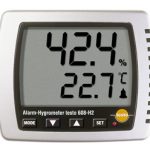A food recall can tarnish a brand’s reputation indefinitely. Unless the company demonstrates its ability to resolve product issues across its operations, it’s likely people will refrain from giving that organisation their business in the future.
According to Food Standards Australia New Zealand (FSANZ), there were 76 food recalls in 2014 across New Zealand and Australia. Last year, there were more such incidents than any other 12-month period since 2005.
HACCP is designed to help companies control chemical, biological and physical hazards.
There are ways to prevent food recalls from occurring. Doing so involves exercising temperature control, packing products appropriately and taking other hazard mitigation steps.
Implementing HACCP
FSANZ outlined management tactics inherent in Hazard Analysis and Critical Control Point (HACCP) programs. HACCP is designed to enable companies that produce, store, ship and prepare food control chemical, biological or physical dangers.
Basically, decision makers can apply HACCP’s principles (listed below) to any operation that handles food, whether that company be a restaurant, abattoir or farm:
- Identify hazards that may be introduced at any point in the business.
- Determine critical control points (CCPs), which enables administrators to deter, eliminate or decrease specific food safety risks.
- Establish critical limits for each CCP to define product quality acceptability.
- Develop CCP monitoring practices, which ensure hazards are controlled according to standards.
- Apply corrections when actions pertaining to CCPs are rendered ineffective.
- Set up a system that verifies a business is adhering to HACCP principles appropriately.
- Maintain records that allow personnel to identify inconsistencies, implement changes and adhere to government regulations.
Applying each of these measures to company operations enables decision makers to classify the hazards they encounter the most. This process isn’t too different from the way FSANZ categorises recalls.
Classifying recalls
No food recall is the same, as different dangers require distinct control measures. FSANZ uses the following classifications:
- Microbial contamination
- Labelling (i.e. when the wrong ingredients are listed on a package)
- Chemical/other contaminants
- Undeclared allergen
- Biotoxin
- Tampering
- Other
ICYMI – #AITHM @jcu researchers develop Australia first food recall app https://t.co/rjKeA6gqTN
— AITHM (@AITropHealthMed) December 13, 2015
Between January 1 2005 and December 31 2014, FSANZ registered more than 580 recalls, the majority of which were classified as microbial contaminations. Labelling was the the second-most common type of recall.
One recall that occurred at the end of October was released by EES Marketing Pty Ltd. Product Safety Recalls Australia noted the defects were associated with potentially cracked or dirty eggs. Such products could contain pathogens that may induce illnesses.
To support your HACCP-based program and prevent recalls, speak with Testo’s experts to learn which instruments are best for your operations.









 Reduce cooking oil costs while ensuring quality
Reduce cooking oil costs while ensuring quality Expert knowledge on CO2 monitoring
Expert knowledge on CO2 monitoring Refrigeration knowledge - in 3 modules
Refrigeration knowledge - in 3 modules



